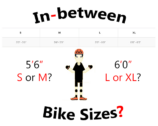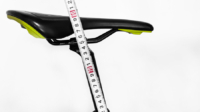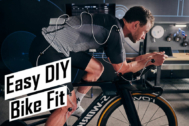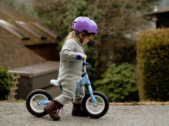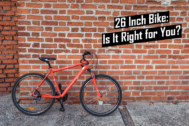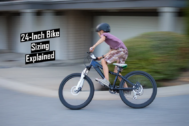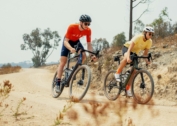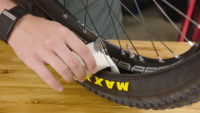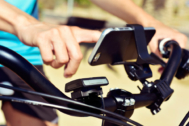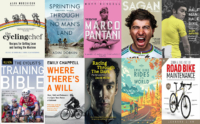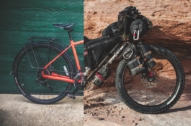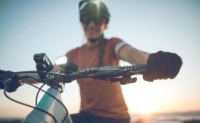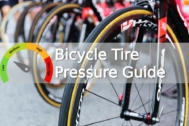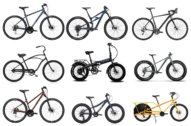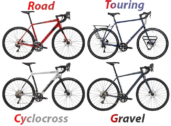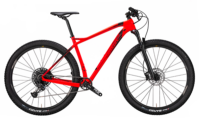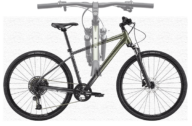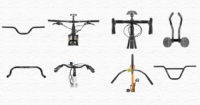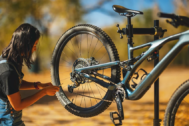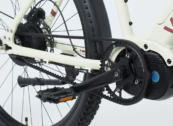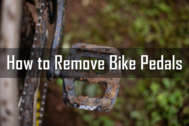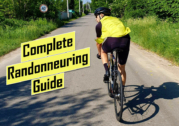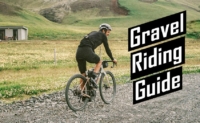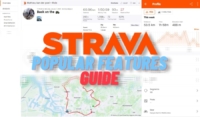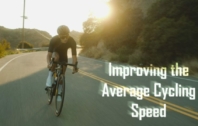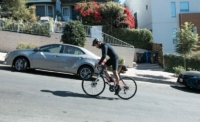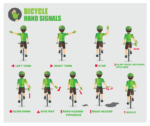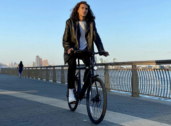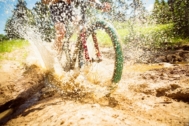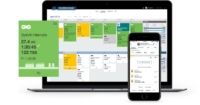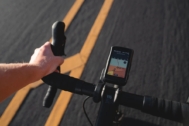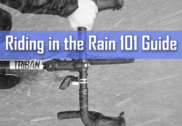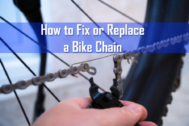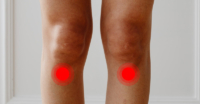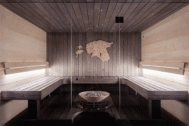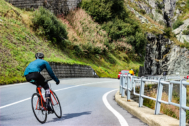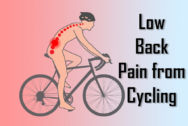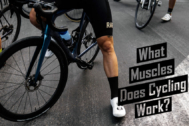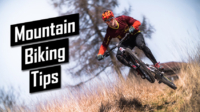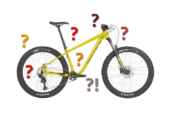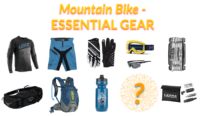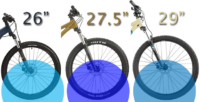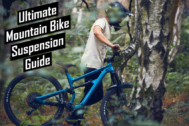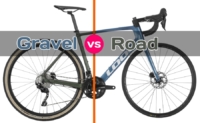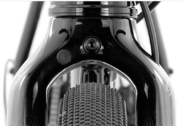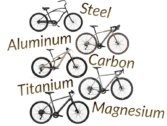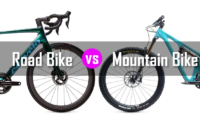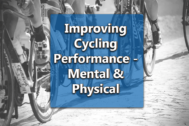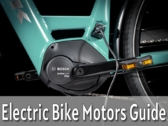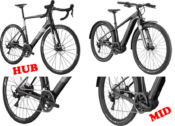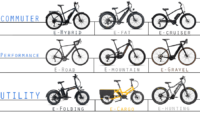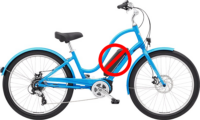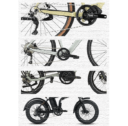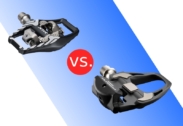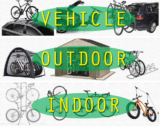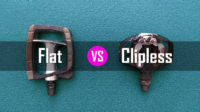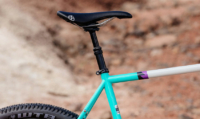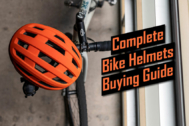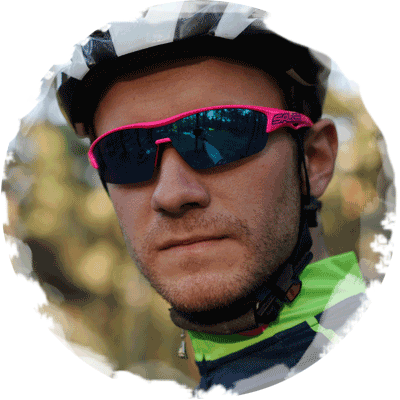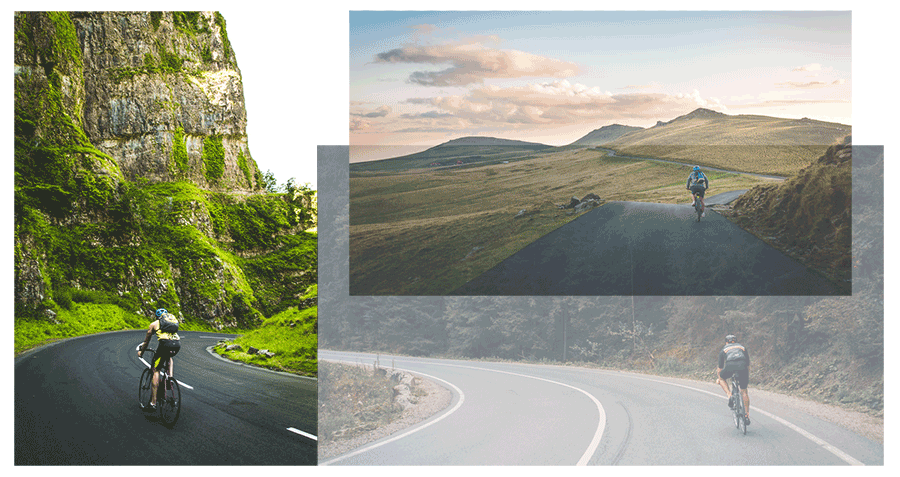
Down below, we have listed some of our how-to guides and cycling tips articles. With these guides, we aim to answer your most frequently asked questions about biking and provide detailed solutions to cycling-related issues.
Categories
Bike Sizing
Bike Size Charts – How to Choose the Right Bicycle Size
Picking the right bicycle size is one of the most important things when talking about bike fitting. There's so much ...
In-Between Bike Sizes – How to Choose When You Fall Between Two Frame Sizes
At least 15% of bike buyers fall in between two bike sizes. So, which one should you go for? We'll help you decide.
...
Bike Wheel Size Chart: A Comprehensive Guide to Selecting the Perfect Fit
Choosing the right bike wheel size for your ride is not just a technicality. The wheel size influences everything ...
Bike Seat Height — Learn How to Adjust It Correctly
Riding a bicycle with the saddle height set incorrectly is not just an inconvenience, it's dangerous, inefficient, ...
Easy DIY Bike Fit: 4 Areas to Improve for a More Comfortable Ride
Image: retul.com
Before you begin riding your new bike, or before doing a long ride of any kind, it's essential to ...
No posts for this criteria.
Kids Bike Sizes: The Easiest Way to Find the Best Fit
When it comes to finding the perfect bike for your kid, understanding kids' bike sizes can feel like a whole new ...
26 Inch Bike for What Size Person? Explaining Everything About 26-Inch Bikes
Have you ever wondered who 26-inch bikes are meant for or what the measurement '26 inches' refers to?
In ...
24-Inch Bike for What Size Person? Is It Right for You or Your Child?
The lack of sizing standardization in the bicycle industry can cause confusion when choosing a bike. Each brand ...
General Cycling Guides
Cairo to Cape Town Cycling Route: Interview with Mark Beaumont and Four Other Cycle Adventurers
Photo courtesy of Mark Beaumont (Private Archive)
After traveling numerous routes and historic cycling paths, it’s ...
What Is a Gravel Bike? Let us Explain
Image source: Cannondale.com
The question "what is a gravel bike?" regularly arises in cycling circles as it is a ...
What Kind of Bike Should I Get?
Cycling has many positive benefits for your health, your wallet, and the environment. Every day, thousands of ...
All You Need to Know About Disc Brakes for Bikes
Since their popularization in mountain biking, disc brakes have slowly edged into the other disciplines. Mechanical ...
Presta vs Schrader Valves: What are the main differences between these valve types?
The question of Presta vs Schrader valves might not cross the minds of most cyclists until they face the decision ...
Tubeless Tires Guide — All You Ever Wanted to Know
Image source: Stan's NoTubes
If you've ever been out on your bike and punctured for the second time in the same ...
15 Best Cycling Apps in 2024: Easily Track Your Rides and Progress on iPhone and Android
In the modern age of cycling, it has become increasingly possible to track and measure every aspect of your riding. ...
19 Best Cycling Books You’ll Read in One Breath
There is a massive selection of incredible bike books out there and something for every reader (or listener). These ...
Cyclocross vs Gravel Bike — Top Differences Explained
The cyclocross vs. gravel bike debate is a new but fiery one. Cyclocross (CX) is the older, more established ...
Best Bike Chain Lube (And How To Use It)
Regular chain maintenance is vital for keeping your bike running smoothly.
The use of lubricant to reduce ...
Bikepacking vs. Bike Touring: What’s the Real Difference?
If you’re a keen cyclist, you’re probably wondering what this new ‘bikepacking’ trend is that you’ve been hearing ...
10 Tips for Riding Your Bike at Night Safely
Credits: Jahangeer BM
Cycling is an environmentally friendly and enjoyable activity that boosts your health and ...
A Complete Bike Tire Pressure Guide
The question "what pressure should bike tires be?" is complex, but using an appropriate tire pressure is a fast, ...
The 20 Popular Types of Bikes You Should Know
The world of cycling offers a plethora of choices when it comes to bikes—from speedy road bikes to rugged mountain ...
Gravel vs. Cyclocross vs. Touring Bikes — Differences Explained
Road bikes and mountain bikes may dominate the cycling scene but in between these two extremes, you'll find several ...
Buying a Bike – Should You Pay More Upfront or Upgrade Later?
For $400 extra, you get a dropper seat post, single front chainring, and a better front suspension.
Buying a new ...
New Bike Buying – Importance of Break-in Period – Check-Up, Tune-up
Image source: rei.com
When you buy a new bicycle, there are a few important things to do to ensure it is set up ...
What Is a Hybrid Bike and How to Choose the Perfect One for You?
A hybrid bicycle is a blend of road and mountain bike components, making it a highly versatile and broadly ...
Bike Geometry Guide — Understanding Bicycle Geometry
Bike Insights & Bike Dimensions
When researching different bike models, you will probably come across the term ...
Bike Handlebar Types Explained
Bicycle handlebars have evolved a great degree over time. The shape, angle and overall characteristics play an ...
Basic Bike Maintenance for Beginner Cyclists: A Complete Guide to Keep Your Bike Running Smoothly
Image source: REI.com
If you want your bicycle to last as long as possible and run smoothly every time you go for a ...
Best Belt-Drive Ebikes of 2024: Low-Maintenance E-Bikes Without a Chain
One of the only downsides of regular bikes is the need to perform regular maintenance to keep them running smoothly ...
No posts for this criteria.
How to Remove, Replace, or Install Bike Pedals: Easy Step-by-Step Guide
Knowing how to change bike pedals correctly is essential to owning a bike. The reasons you may want to change yours ...
Best Bikes for Teenagers in 2024: Top Mountain, Hybrid, and Cruiser Bikes for Teens
Image source: giant-bicycles.com
Cycling is one of the most enjoyable activities you can do as a teenager (no bias ...
Simple Steps to Stop Squeaky Bike Brakes
Squeaky bike brakes are one of the most common and irritating issues in cycling. But, as frustrating as the noise ...
What Is Randonneuring: A Complete Guide to Becoming a Randonneur
Randonneuring is a recreational cycling niche that inspires riders to push beyond what they believed they were ...
Beginner Cyclist Tips
Complete Gravel Biking Guide — Everything to Know Before Hitting Gravel
Gravel biking is one of the fastest-growing cycling disciplines. Although riding on gravel isn't new, the exciting ...
How to Adjust a Rear Derailleur for Crisp and Precise Shifting
Adjusting bike gears is essential for maintaining effective and consistent shifting performance and avoiding issues ...
How to Use Strava: A Guide to Strava’s Popular Features
Over the past decade, technology developers have been using the popularity of smartphones and tracking devices to ...
Beginner Tips for Handling a Carbon Fiber Bike
Santa Cruz Bicycles - Stigmata, a carbon gravel bike frame
If you have found this article it’s likely you have ...
What Is the Average Cycling Speed and How to Increase It
Many cyclists want to raise their average speed with each ride they take, yet most end up maintaining a constant ...
Complete Beginner’s Guide to Training with a Power Meter
Image: stagescycling.com
Since their introduction in the late 1980s, power meters (PM) have revolutionized how ...
16 Things to Avoid as a Beginner Cyclist
We all make mistakes when we try our hand at a new skill, and this applies to riding a bike too.
The important ...
Is Carbon Fiber Good for Beginner Cyclists?
Carbon fiber bicycles are becoming more accessible to recreational cyclists every year. This is due to a growth in ...
Climbing Tips and Tricks—How to Climb Hills Faster
Hill climbing has long been the ruler by which many cyclists measure their worth. The popularity of extreme hill ...
Essential Bike Hand Signals for Group Rides and Commuting
Source: bicyclensw.org.au
Bike hand signals are a fundamental part of riding a bike safely on the road, whether ...
Best Bikes for College Students to Ride Around the Campus
Image source: Wingbikes.com
Bicycles offer a fast and efficient solution to get around in urban environments, ...
No posts for this criteria.
Biking Etiquette & Safety Tips – The Written And Unwritten Rules
Cycling is a fun and rewarding activity, whether as transport, exercise, or just a means for socializing. To avoid ...
How to Clean a Bike: A Comprehensive Step-by-Step Guide
Bike cleaning is an essential component of a regular bicycle maintenance routine. A clean bike looks better, ...
Injury Prevention & Rehab for Cycling
Taking part in any sport or exercise brings with it the risk of injury, and cycling is no different.
It is ...
Winter Cycling Clothing Essentials — How to Layer up for Winter Cycling
For many, the weather during each of the four seasons vary greatly depending on what climate you’re living in, so ...
How to Create a Cycling Training Plan
A training plan is a very helpful tool to use when you are trying to achieve a fitness goal for an upcoming cycling ...
How to Complete Your First Century Ride — Crucial Tips for Beginners
The question "what is a century ride?" is commonly asked by new cyclists. A century ride is a 100-mile bike ride ...
Biking in the Rain — Top Tips to Enjoy Wet Weather Rides
Biking in the rain is something all cyclists must face. Many of us live in wet climates or use our bikes as ...
How to Fix a Bike Chain — Replace & Resize a Bike Chain Easily
Replacing your chain at the right time will prolong the lifespan of your whole drivetrain and prevent loss of ...
Cycling & Health Guides
Cycling Knee Pain — Understanding and Fixing the Most Common Causes
Photo by Esther Max under Creative Commons 2.0
Knee pain is one of the most common injuries in cycling for both ...
Improve Recovery, Performance and Health with the Sauna
Do you want to improve your cycling performance, recover faster between rides, or maintain muscle while recovering ...
Cycling Technique Guide
Cycling with the correct technique helps you stay safe on the road, save energy with each pedal stroke, and avoid ...
Is Gatorade Good for You? Uses, Benefits and Downsides for Cyclists
Gatorade is the world's largest sports drink manufacturer, with a share of almost half the global sports drink ...
No posts for this criteria.
Cycling Nutrition — All About Carbohydrates
Carbohydrates (carbs) are a vital energy source for the body.
Eating the right type of carb, in the right ...
Lower Back Pain from Cycling — Causes, Treatment, and Tips for Prevention
Don't let lower back pain stop you from cycling.
Lower back pain when cycling is, along with knee pain, the most ...
What Muscles Does Cycling Work? From Core to Calves
Cycling is a popular form of exercise that has many benefits for physical and mental health, and it continues to ...
Mountain Biking Guides
In-Depth Review of Specialized Mountain Bikes: Pioneers of Mountain Bike Performance & Design
(All images sourced from Specialized.com)
Specialized is one of the world's best bike brands, renowned for pushing ...
Mountain Biking for Beginners — 19 Tips to Improve Your Skills
Learning to mountain bike is a fun and challenging process that never truly ends, but the learning process is ...
Mountain Bike Buying Guide — Your Guide to Buying the Perfect MTB
Do you need a hand choosing the right mountain bike?
In this mountain bike buying guide, we will tell you all ...
Mountain Bike FAQ
Down below you'll find answers to the most asked questions online. If you think something needs to be added - feel ...
Gravel Bike vs Mountain Bike Comparison: Which Type to Choose?
Gravel bikes have seen massive growth in popularity over the past decade, to the point that most bicycle ...
What is the real cost of a bicycle?
Have you ever wondered how much would it take to build a bicycle from the ground up, or what is the real cost of a ...
List of the Basic & Essential Mountain Bike Gear
Reaching far-away locations requires a bunch of preparation beforehand. Most of the essential mountain bike ...
26″ vs 27.5″ vs 29″ Mountain Bike Wheel Comparison
Choosing the right mountain bike wheel size for your riding style and preferences will undoubtedly make riding more ...
Complete Mountain Bike Suspension Guide: Explaining Basic Concepts and Adjustments
Image source: cannondale.com
Bike suspension is one of the most complicated topics in cycling. It would take a ...
Road Cycling Guides
Gravel Bike vs Road Bike — The Main Differences and Similarities Explained
Over the past few years, gravel bicycles have experienced massive growth in popularity.
Although they look like ...
Road Bike Buying Guide
Overview / Buying Guide / Sizing / Types / Reviews / Best Picks /
Well, let's start from the beginning. At the end of ...
Best All-Road Bikes in 2024: Our Top Recommendations for Mixed-Surface Riding
The best all-road bikes will lap up the tarmac and not blink when you cross over onto compact gravel.
All-road ...
Bicycle Frame Material Guide: Aluminum, Carbon, and Steel and Titanium Examined
Down here you'll get a brief overview of some of the pros and cons of each bike frame material.
Throughout time, ...
Road Bikes vs. Mountain Bikes: Understanding the Differences and Similarities
Road bikes and mountain bikes are the two most common types of bicycles available, serving the two most common ...
How to Improve Your Cycling Performance
The drive to improve performance is common at all levels of cycling.
The motivations range anywhere from wanting ...
Triathlon Bike vs Road Bike: Biggest Differences Explained
Triathlon bikes are a relatively modern innovation in cycling, arriving on the scene late in the 1980s when Ralph ...
Road Bike Handlebar Guide: Choosing the Perfect Handlebar
Handlebars are one of the three touchpoints on a bike, along with the saddle and pedals. Yet, despite significantly ...
E-Bike Guides
Electric Bike Motors Explained: A Complete Guide
Image source: Trek Bikes
Many riders struggle to choose an e-bike because of the overwhelming variety of electric ...
A Complete Guide to Electric Bicycle Batteries
An electric bicycle battery is one of the most influential components of an e-bike. It provides power to the motor, ...
Hub Motor vs. Mid-Drive E-Bikes — Which One to Choose?
When electric bikes began being mass-produced, manufacturers used an electric motor placed in the hub of the rear ...
Types of Electric Bikes Explained for Beginners
As time progresses, the number of different types of electric bikes increases with the demand. Although reliable ...
Electric Bike Rules & Regulations Explained
Electric bikes themselves might be easy to use, but the laws around their usage, particularly in the United States ...
11 Reasons Why an E-Bike Might Not Be for You
The numerous benefits of electric bicycles are undeniable. We are big advocates of e-bikes for this reason and are ...
Why Ebikes Use a 1x Drivetrain?
Specialized Turbo Vado SL 5.0 EQ e-bike with a 1x drivetrain.
Most eBikes on the market have 1x drivetrains (single ...
Cycling Gear Guides
Shimano SPD vs. SPD-SL Pedals — Which Ones to Choose?
If you're a cyclist making the switch to clipless pedals for the first time, it helps to compare SPD vs. SPD SL ...
Types of Bike Brakes Explained — Rim Brakes vs. Disc Brakes vs. V-Brakes
Bike brakes have been subject to constant innovation and development down the years, with ...
Types of Bike Pedals — A Beginner’s Guide
Choosing the right bike pedals can be confusing for a beginner cyclist. There are various functions, shapes, and ...
Water bottles vs Hydration packs – Which is the Best Way to Stay Hydrated?
It is essential to carry enough water with you when you ride, whether you’re off-road cycling or road cycling. The ...
18+ Different Bike Storage Ideas (Outdoor & Indoor + Vehicle)
To help you overcome your space puzzle, we've put together this guide to the different storage ideas, where to use ...
Clipless vs Flat Pedals: Is a Flat or Clipless Pedal Better for You?
Deciding between clipless vs. flat pedals can be tricky, especially for beginners. Each cycling discipline has ...
Indoor Cycling Exercise Bike Guide
An exercise bike is perfect for those times you want to ride your bike but without the hassle of going ...
Electronic vs Mechanical Shifting: The Pros and Cons Explained
Comparing mechanical vs. electronic bike shifters is a hot debate in the cycling world. In recent years, the ...
Best Gravel Bike Pedals — Our Top Choices of Best Pedals for Gravel Rides
Gravel biking continues to grow in popularity, with more and more riders finding the appeal of riding off-road at ...
Best Cycling Sunglasses — Top 15 Models to Consider for Style & Comfort
Sunglasses are an essential cycling accessory that makes riding safer and more enjoyable because, let's face it, ...
Best Gravel Bike Tires of 2024: Top Choices for Grip, Speed & Control
Gravel bike riding is one of the newest and most exciting styles of cycling, combing the speed of road racing with ...
Does Your Gravel Bike Need a Dropper Post?
Image: allcitycycles.com
Dropper posts are adjustable seatposts that move up and down to change the saddle's ...
How to Choose the Perfect Bike Helmet for Your Style of Riding
Image: REI.com
Using a bike helmet that fits perfectly and matches your riding style over one that doesn't can ...


